We’ve had several students who scored 615 or so on the GMAT practice tests. But by some miraculous twist, they scored 655+ on the day of the GMAT!
On the flip side, we’ve also had students who consistently scored above 655 on their practice tests but ended up with a final GMAT score that was 30 to 40 points lower than what they had expected.
These kinds of instances make one wonder: how are some students able to achieve their desired score on the GMAT?
And why are others not able to do so?
If you’ve been preparing for the GMAT, you know that taking the GMAT is much more than just paying the $275 fee; it’s also about the tremendous mental effort that goes into the preparation for the exam. Most importantly, you also have to face the stress of the fact that all your future plans will go for a toss if you do not score well!
You probably have your GMAT day scheduled, and you are probably wondering what you can do to improve your chances of success on the day of your exam.
Don’t worry! In this blog, we are going to give you a total of 23 GMAT day tips that will help you give your best performance on your test day and get you that dream GMAT score.
We are not claiming that we have invented the magic sauce behind test-day success, but this list is our attempt to distil all the “good stuff” that has helped our students find success on the GMAT.
To make things easier for you, we have divided the tips into:
What should you look out for before you register for the GMAT?
1. Is your passport valid?
2. Is your GMAT registration name the same as in your passport?
3. Should you take the GMAT online or at a GMAT test center?
4. Which slot should you book for the GMAT?
What should you be careful about on the day of the GMAT?
5. Have you slept well before your GMAT test day?
6. When should you wake up on the day of the GMAT?
7. What should you have for breakfast on the day of the GMAT?
8. What should you wear to the GMAT center?
9. How early should I reach the GMAT center?
10. Should you drive to the GMAT center?
11. What should you eat at the GMAT center?
12. What if you feel sick at the GMAT center?
13. What should you do with your mobile phone at the GMAT center?
What should you keep in mind during the GMAT?
14. How should you decide on the GMAT section selection order?
15. How do I tackle the GMAT experimental questions?
16. How can you manage background noise during the GMAT?
17. How should you pace yourself / time yourself on the GMAT?
18. How should you time and use your break on the GMAT?
19. How should you use the GMAT scratch paper?
20. How to achieve peak performance during the GMAT?
What are the points to consider after taking the GMAT Focus test?
21. Should you cancel your GMAT score?
22. How do you select B-schools on the day of the GMAT?
23. How can you be an optimist on your test day?
Before we dive into these questions, let us answer the question that is on your mind right now: Can I really improve my test-day performance?
The answer is YES!
While we believe that learning the strategies and skills required matter the most in improving your GMAT performance, we know that it will be your ability to maintain your focus on the D-day that will play a more important role in ensuring that you put in your best.
Let us keep things simple and have a look at those tips, shall we?
Grab your free copy of ‘Demystifying GMAT Focus Edition’
Grab your free copy of ‘Demystifying GMAT Focus Edition’
What to look out for before you register for the GMAT
Is your passport valid?
You need to present your valid passport as identification if you want to take the GMAT.
It’s not enough to just have a passport; you need to present the original copy of your passport if you want to take the exam. Soft copies, scanned copies, or physical copies will not be accepted as identification.
Also, if the validity of your passport has expired, documents that show that your passport has been accepted for renewal will not work as a substitute for a valid passport.
We have seen so many examples of students whose passport validity expired a few days before the GMAT or who submitted their passport for visa stamping just before the GMAT.
We even had a student who left his passport at his parents’ house in his hometown for “safekeeping.”
All these students assumed that they would not need to bring the original passport since they had already scanned and uploaded their passport while registering for the GMAT.
They had to learn the hard way that candidates are instantly rejected, and their exam is canceled if they do not have their valid, original passport with them.
What’s worse, they will lose the examination fee since they failed to read and follow the instructions given during registration.
So, the very first thing on your GMAT checklist should be to ensure that your passport is valid for at least 3 months and that you TAKE THE PASSPORT WITH YOU ON THE TEST DAY!
Is your GMAT registration name the same as in your passport?
One of our students came to us a few days before his GMAT.
“I mentioned my name as ‘Gopal K’ when I registered for the GMAT. But my name is mentioned as “Gopal Kalyan” in my passport. Is that okay?”
Our answer was simple: No, it’s not okay.
When you are registering for the GMAT, make sure that you are mentioning the first name, middle name, and last name exactly as they are mentioned in your passport (especially if you are from South India or from one of those cultures where names can get really complicated).
If the name you provided during registration is not the same as in your passport, you will not be allowed to take the GMAT, and the fee amount will not be refunded.
Note: A few of our students have told us that the administrators have been kind enough to let them log into the portal and change the details in their registration. But this may not happen for you. Why stress yourself out on the day of the test if you can avoid the problem altogether?
Should you take the GMAT online or at a GMAT test center?
If you’re the sort that thrives under pressure, then taking the test at a GMAT test center, where’ll you’ll come across many other test takers, may be the best step for you. In most centers, time slots are available from 8 in the morning to 4.30 in the evening.
But if test-taking is a stressful exercise for you and seeing other test takers looking super prepared can make you feel underconfident, then it may be a better bet to take the exam at home.
This is especially true if you are an early bird, a night owl, or a full-time worker who has no time to go to the test center to take the test. Online test slots are available 24×7, and you can book any slot that suits your convenience.
Note: By the way, some Indian schools, such as the IIMs and ISB, do not accept online GMAT scores. So make sure you do your research on the requirements of the schools of your choice before you book your test.
You cannot change the chosen format once you have booked your exam.
Find out more about the pros and cons before you make a decision. Read our blog: GMAT Online vs. GMAT Test Center
Which slot should you book for the GMAT?
Are you a morning person? Do you feel you are at your best at about 9 am?
Or are you an evening person whose energy levels peak as the day progresses?
The answers to these questions will help you decide which GMAT test slot will work best for you.
If you are someone who prefers to get your work done or study in the morning, you’ll probably be at your best in the morning.
In contrast, if you are the sort whose energy levels increase as the day progresses, it’s best to book a slot that is a little later in the day.
No matter what the time slot, you should take the exam when you know your mental ability will be at its sharpest. Something as simple as the time you take your test can play a big role in the score you finally get.
What should you be careful about on the day of the GMAT?
Have you slept well before your GMAT test day?
Test-day jitters are very real, and it is almost impossible to calm down and go to sleep the night before a test. But you absolutely need to get enough rest the night before you take your GMAT.
If you find that you cannot unwind, you can get hold of a few relaxation and meditation apps that can help you relax your brain and let you put down your mental baggage for the night. Or maybe you could take a nice, warm shower before you go to bed so that you can get a good night’s sleep.
Whatever it is, make sure you find a way to relax the night before the test day, because feeling well rested before the test is a key factor in performing well.
When should you wake up on the day of the GMAT?
It is recommended that you wake up early on the GMAT test day, but is that really the best idea?
Let’s do a reverse calculation using an example:
- Let’s say that you have booked a morning slot for, let’s say, 8 am
- Let’s assume that you need to leave your house at 7:00 am to reach the centre by 7.45 am
- That means you will probably have your breakfast at about 6:30–6:45 am
- And that means you need to wake up at about 6:00 am
What if you are someone who wakes up at 8 am every morning? Do you think it will be easy for you to get up at 6:00 am? Do you think you’ll be at your best if you wake up 2 full hours before your usual time?
And what if, in spite of all the relaxation techniques you tried out, you were not able to get a good night’s rest?
You will also probably wake up before the alarm goes off because you will be hypersensitive to the fact that it’s your exam day.
All of this will just add to your brain fog.
So here’s our advice to you: please wake up at the time you wake up every morning.
And make sure you book a slot keeping this in mind.
What should you have for breakfast on the day of the GMAT?
We are not qualified nutritionists, but we have read plenty about how to get your body into a “peak performance state” just before your GMAT.
One way in which you can get into such a state is by having a light breakfast to ensure you remain active and focused throughout the exam
You can have a light meal like idlis with sambhar.
Or you could have poha or upma.
Or corn flakes with milk.
Or parathas with curd and pickle.
Or egg and toast.
Or whatever else you would have on a normal day.
Just make sure that it will fill your stomach and let you think nimbly.
Don’t eat junk food the day before the GMAT or the night before. You don’t want to upset your stomach.
Note: Don’t have a chocolate bar because you’ve read somewhere that the hit of sugar will give you additional energy. Sugar tends to make you go on a “high,” but then you also end up crashing to horribly low levels of energy. Imagine if that happens right in the middle of the exam!!
What should you wear to the GMAT Center?
Whatever you choose to wear, make sure you are dressed comfortably. If you are uncomfortable, you’ll probably not be able to focus and will end up subconsciously rushing through the exam (and maybe selecting the trap options) because you just want to get the exam done and over with.
We have had students tell us that the A/C in the GMAT centre was set at the lowest temperature. So you should consider taking along a jacket or a sweatshirt to wear on top of whatever you are wearing. You can always choose not to wear it if it is not so cold.
On the other hand, we have sometimes also heard that the test centre was very warm.
It may be hard to change or control such situations, but it is better to be prepared for the worst.
How early should I reach the GMAT centre?
Whether you’re taking the test in the morning or the afternoon, check Google Maps and figure out the average time it will take you to get to the GMAT centre.
Imagine your exam is on a Wednesday at 8 in the morning.
Check the travel time for Wednesdays on Google Maps to get an understanding of how long it would usually take to get to the GMAT test center on any given Wednesday. Make sure you check Google Maps on the day of the exam as well. You don’t want an unexpected traffic jam or rain to topple your travel plans.
If Google Maps shows that it will take a 30-minute drive to get to the center, plan to leave by 7:10 a.m. This will give you an extra 15 to 20 minutes to find the test center, park your car or bike (or say goodbye to your Uber driver), and check in. Try to arrive early at the test center to ensure that you have enough time to get settled and organized before the test begins.

While it is a great idea to arrive a little early, it’s best not to arrive more than 20 minutes before time. We have had students reach the GMAT test center an hour before and then realize that they’ll have to wait outside the center for 45 minutes, not knowing what to do. The waiting around will do nothing but increase the sense of anxiety.
If your test center is far away from where you are and you want to reach the center before time to be on the safe side, take time out a few days before the exam to conduct a reconnaissance to find a place within walking distance where you can potentially relax. Hanging out at a cafe is a better bet than standing outside the test center, waiting to be let in.
Look, if you arrive a few minutes late, no one’s going to stop you from taking the exam. But arriving a little before time will make you feel less stressed. So, try to be punctual.
Should you drive to the GMAT Center?
The day you take the GMAT is an important day for you, and you cannot let any external factor impact your performance on that day.
So, what is the best way to travel to your GMAT centre? We have narrowed it down to four options:
- Drive yourself
- Take public transport (bus, metro, etc.)
- Take a cab
- Get dropped off
In terms of comfort and risk involved, we would say: 4 > 3 > 2 > 1
On the day of the GMAT, the last thing you want is to stress yourself. If you can get someone to drop you off, you won’t have to worry about where to park, what to do if the bus or train is not on time, or if the cab driver cancels the trip at the last moment. You can just relax and focus on the test you are going to take.
Getting dropped off at the center is the best commute option, but if that is not a choice you have, just make sure you leave early enough to reach 15 to 20 minutes before your exam time.
What should you eat at the GMAT Center?
Many students, especially from India, read online forums like GMAT Club and find stories about people scoring 735 or 755 on their test after eating a Snickers bar or drinking a Red Bull during their break.
A simple question for you:
If you were hungry on a regular day, would you have a candy bar or an energy drink?
If your answer is no, then please don’t go for such an option on the day of your GMAT either, no matter what these forums say.
Just have a snack that you would normally have. Usually, a banana, a few biscuits, a low-sugar protein bar, or some juice or water to help you stay hydrated throughout the lengthy examination would be good options.
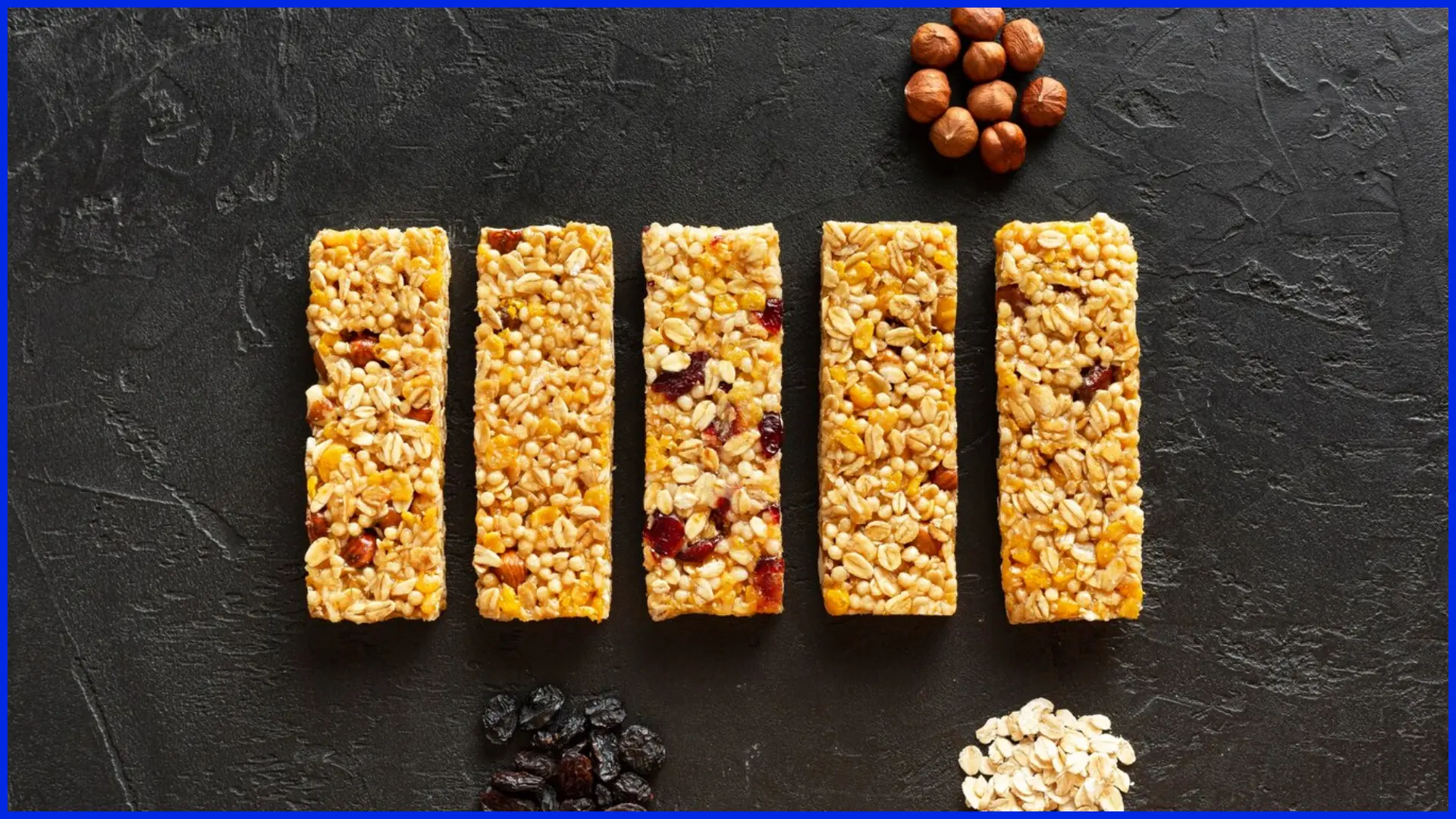
Keep in mind that, as per the GMAC exam policy, you’re not allowed to bring snacks into the examination room. You can store your snacks in the test center’s temporary locker. Feel free to eat your snacks during the 10-minute break.
P.S: It is also important to note that you should not bring any testing aids, including study materials, notes, calculators, blank sheets of paper, stopwatches, and flashcards, to the GMAT testing center.
What if you feel sick at the GMAT center?
You might be a very healthy person in general, but exams can get the better of you.
What if you get a headache or a stomach ache at the GMAT test center?
The simplest way to take care of this is by carrying a small medical kit with you. It does not even need to be a complete kit. You could just keep a few essential medicines in your bag, such as aspirins, antacids, and even a lip balm for if it gets too cold.
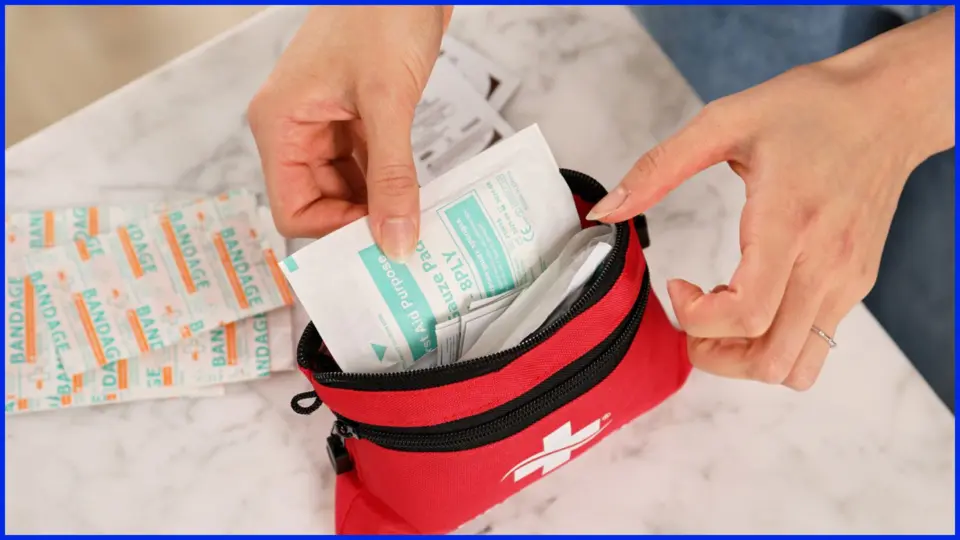
But if you feel very unwell and need more than basic medication, be sure to alert security and go home. You can always take the test later, but your health always comes first.
What should you do with your mobile phone at the GMAT center?
Try not to take your phone when you go for the test. But we understand how your mobile is a tool you just can’t do without. What if you have to call for a cab or if you have a medical emergency?
If you do take your mobile phone to the center, you’ll need to store it in the temporary locker since you are not allowed to take mobile phones or any other electronic device into the testing room. Be sure to switch the mobile off before you put it away in the locker. Now, you may think that you can put your mobile phone on silent or in aeroplane mode so that you can quickly check your messages when you are taking a break.
But why would you want to do that? Checking messages during the break will just take you out of the test-taking zone that you are in. Why bring in such a distraction?
More important than that, keep in mind that you are not allowed to use your mobile phone or any other electronic device during your break. If you do, your test can be cancelled with no fee refund.
Here’s a very interesting (and unfortunate) incident that happened to one of our students:
He had attempted the Quantitative and Verbal sections and then took the 10-minute break before going in to attempt the Data Insights section. He walked out of the test room and opened the locker to grab a quick snack. He had not switched his phone off, and he made the mistake of checking his phone. He was shocked to see six missed calls from the same number. So he called the number to find out if there was an emergency.
While he was talking on the phone in the centre, one of the administrators spotted him and cancelled his test!
(And the worst part is that the missed calls were from an Amazon delivery agent!)
These are all small points, but we have noticed that sometimes they can cause problems. You do not want your months of GMAT preparation to go to waste over a mobile phone!
What should you keep in mind during the GMAT?
How should you decide on the GMAT section selection order?
There are six options for you to pick from:
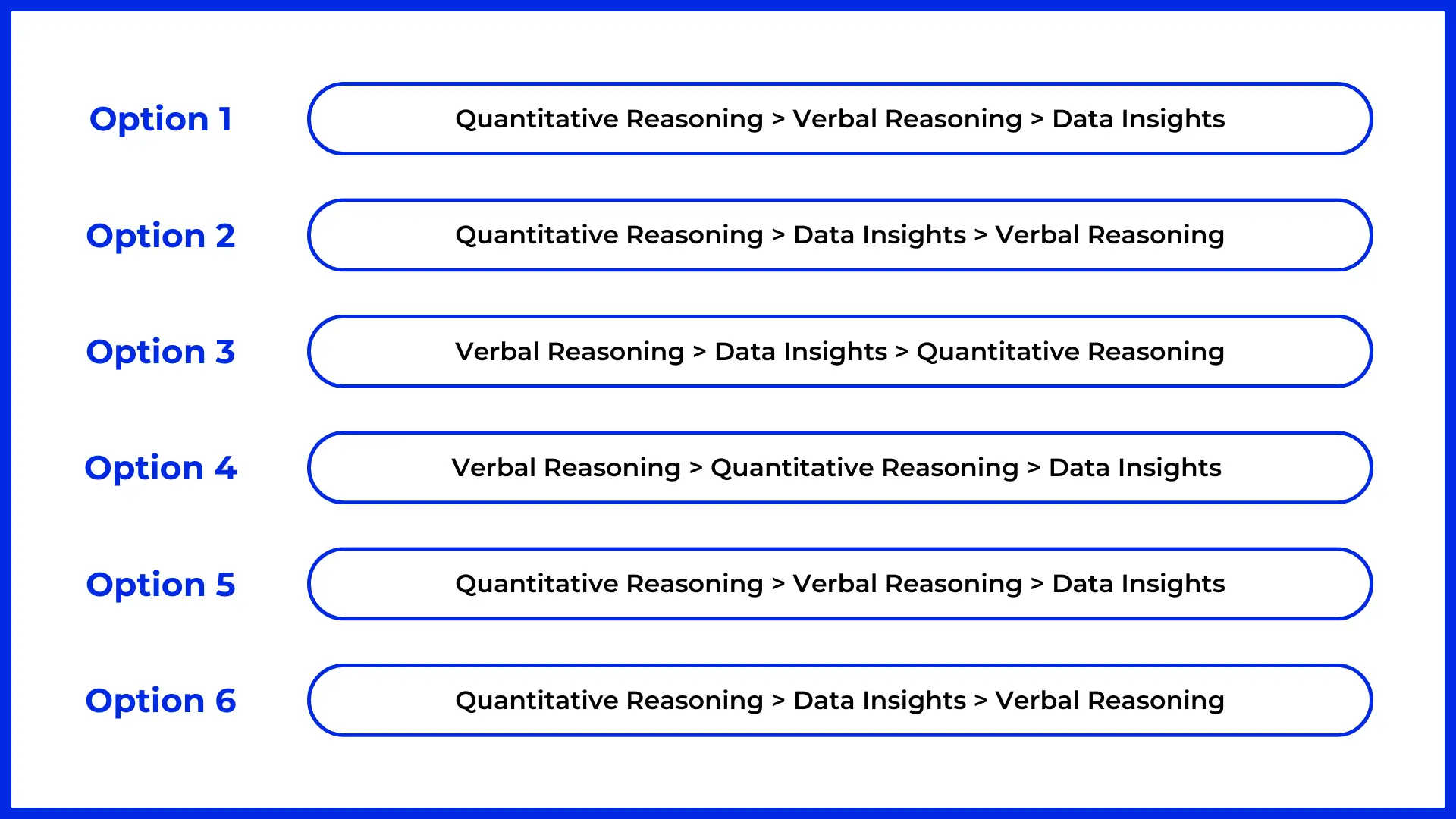
What most candidates don’t know is that they have just one minute to select their preferred section selection order. If they don’t choose within a minute, they will have to take the test in the default order: Quantitative Reasoning, Verbal Reasoning, and Data Insights.
Which section you choose to take first depends on what you are feeling and the kind of person you are. If you are at your best at the beginning of a test, it might be a good strategy to start off with a section that you are really good at so that you can maximize your score.
If you are someone who takes time to “ease” into the exam, maybe you could keep the tougher sections for later. It’s very important to know your patterns, strengths, and weaknesses so that you can make a decision that is most advantageous for you.
Whichever order you finally decide on, we suggest that you take a couple of practice tests in this order to check the outcome and your comfort level.
A word of caution over here: Suppose you take two practice tests using two different section selection orders, and let’s say there is a difference in the scores between the two tests.
Before you jump to the conclusion that one order is better than the other, make sure you analyze your performance and confirm if the difference is because of the section selection order and not because of other reasons.
How do I tackle the GMAT experimental questions?
The GMAC constantly creates new questions to be used in the GMAT. Since the GMAT is a standardized test, it’s very important to ensure that the questions do not have any issues or errors. The GMAC tests these new questions by presenting them in the exam. These new questions that are still at a testing stage are called experimental questions.
Rest assured, it doesn’t matter whether you get these questions right or wrong, because these questions are not scored and do not count towards your GMAT Toral score.
The tricky part is that you will not be told which questions are experimental. However, none of this matters because there is no way for you to recognize an experimental question.
Fortunately, here is something that we do know for a fact:
The experimental questions will typically appear in the middle of a section.
So, if you are going to guess answers, you probably shouldn’t do so…
- in the beginning of the section, and
- at the end of the GMAT.
So the best time to make a guess is somewhere in the middle of the test.
How can you manage background noise during the GMAT?
During the GMAT, you may hear other candidates either clicking with the mouse or murmuring while solving the questions.
You may also hear some noise from outside the test center. All of this will be highly distracting. So, mentally prepare yourself for distracting background noise.
Taking GMAT practice tests in a somewhat noisy place could help you get used to background noise. While taking these tests, you can even use apps that play background sounds so that you can learn to focus on the questions even with noise around.
But if you feel that the noise or disturbance is too much in the test centre, you can definitely report the problem, and the test center personnel will hopefully find a solution to it.
How should you pace yourself / time yourself on the GMAT?
First, let us look at what a pacing chart is.
A pacing chart is essentially the number of questions and the amount of time available for each question. Remember that on the GMAT day, your timer is going to be a countdown timer. That means it’s not going to count up from zero, but it will count down from 45 minutes to zero.
You don’t want to stress out on the day of the GMAT. So let us create a simple pacing chart for your test, in which we will see how you can constantly check if you have enough time on hand as your exam progresses.
This chart means that when you have finished the 6th question in any of the sections, your timer should read 34:00, indicating that you have 34 minutes left to complete the rest of the section. If the timer shows a higher number, you can afford to slow down slightly. But if the timer shows a lower number, you may need to speed up a little and even guess a few answers.
As mentioned earlier, it is better to pepper your “guesses” throughout the test. Also, remember that most of the experimental questions will usually be somewhere in the middle of the test. So it’s better to guess in the middle rather than at the beginning or the end.
How should you time and use your break on the GMAT?
You have one 10-minute break during the GMAT Focus test. You can take the break after the first section or after the first two sections.
During the break, you can:
- come out of the test room and stretch yourself for a bit
- go to the washroom
- go to your locker to grab a snack
Remember that you are not allowed to wear a watch during the test. So if you choose to step out of the test room during the break, don’t spend too much time outside. The test will resume after the 10-minute break.
If you end up overshooting your time, then you might end up losing a few precious minutes on the GMAT.
A few minutes of lost time is not really a make-or-break factor. However, having a good time management strategy and getting back to your test computer on time can help you stay calm and focused and lead to better performance.
The same rules apply if you are taking the test online. You are allowed to leave your desk during the break, but you are expected to keep the camera on and to leave the physical whiteboard at your workstation.
How should you use the GMAT scratch paper?
At the GMAT test centre, you will be provided with something similar to a big spiral notepad. This is the GMAT scratch pad.
Each pad contains 5 laminated sheets and two dry-erase markers. Make sure you scribble to check if the pen writes well. If not, you can always ask for a replacement.
Make sure you use the sheets optimally. However, if you need more, you just need to raise your hand, and the proctor will come over to help you.
If your taking the exam online, you’ll need to get hold of a physical whiteboard no larger than 12 x 20 inches, or you can even use the online whiteboard that will be provided.
No matter which format you choose to take the exam in, you must practice using the laminated sheets or the whiteboard so that you are more comfortable during the exam.
How to achieve peak performance during the GMAT?
Have you heard of this phenomenon called “decision fatigue”?
To explain it simply, think of your brain as a mobile battery. The more information you consume, the more battery power you consume.
Similarly, the human brain also has limited battery power. After a long day, your brain is just tried from all the decisions that you’ve made all day.
So, how do you conserve your energy on the test day and ensure you are in your peak performance state?
First, don’t leave any decision-making for the morning. As mentioned earlier, ensure you have made all the logistical checks the evening before — packed your passport and picked out the clothes to wear, food to eat, the route to take, etc.
Second, don’t engage in difficult conversations with anyone on your test day. Don’t try to do any other work before you take the GMAT, especially if you have chosen the afternoon slot for your test.
On the GMAT day, you should have near-perfect mental energy and composure to ensure that you will perform at your best. This applies to both first-time test takers and retakers, as maintaining a positive mindset and avoiding distractions is crucial for peak performance on the GMAT.
Evaluate your fitment For GMAT Focus Edition
Evaluate your fitment For GMAT Focus Edition
What are the points to consider after taking the GMAT Focus Test?
Should you cancel your GMAT score?
We agree that nobody wants to walk into the test center with the mindset that they will have to cancel their score. But if you need to cancel your score for whatever reason, you have the option to do so.
Immediately after your GMAT, your score will appear on the screen, and you will be asked whether you want to accept or cancel your score.
At this point, it becomes very important to make a quick decision, as you are only given two minutes to make up your mind. If the time expires before you make a decision, your score will be automatically canceled for free.
“So…should I cancel my score or should I hold on to my score?
To help you make this decision, it is a good idea to have some kind of “cutoff” in mind.
Let’s imagine that 655 is your cutoff. You have done your research and you know this is the score you need to have to get into the school of your choice.
Imagine you get 615. In such a case, you know that canceling the score is the best option.
Imagine you get 645. Not the score you were hoping for but still good enough. You’d probably decide to hold on to this score even though it is lower than your cutoff.
Not let’s imagine you get a 675. Bull’s eye! You can quickly accept your score and go on to choose the B-schools or programs you want to send your score to.
How should you select B-schools on the day of the GMAT?
Before you take the GMAT, consider preparing two lists of potential B-schools or programs you would like to apply to.
List A should have a list of up to 5 schools that, as per your research, would probably accept your application if you hit your target score, and List B should have a list of up to five less aspirational schools or programs that would accept your application even if you have a slightly lower score.
Let’s look at an example…
Given below are two lists of schools and the average GMAT scores needed to apply to these schools.
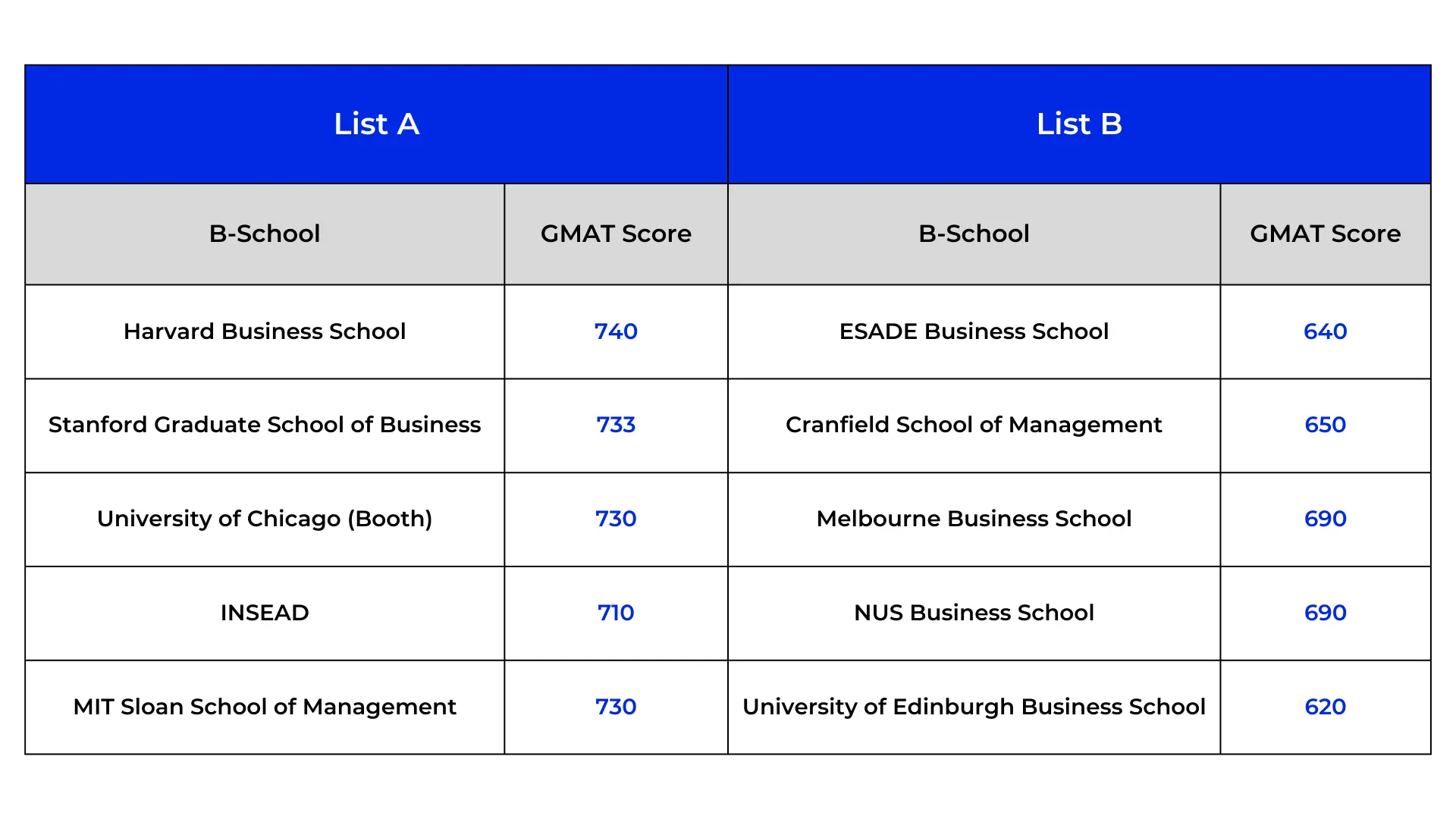
Let’s imagine that your target score is 715.
If you reach or exceed this score, focus on applying to the schools in List A. However, if your score falls below 715 and you decide that you do not want to cancel your score, consider applying to the programs mentioned in List B.
Tailoring your applications based on your GMAT performance can enhance your chances of securing admission to institutions that align with your academic profile and aspirations.
Get in touch with our experts to curate your List A and List B before your exam.
How can you be an optimist on your test day?
What time you go to bed, what you eat, how you get to the center—all of this might affect your progress.
But there’s one more factor that will have a huge impact on your performance, and that is having a positive mindset. This will help you in ways that you might not even realize
Here are two simple things you need to keep in mind to maintain a positive frame of mind on the day of the GMAT:
1. Read debriefs written by students who have actually done very well on the GMAT. It talks about what they did and how they prepared for the GMAT. And when you hear a good story, it automatically makes you feel more positive.
2. Visualize yourself sitting down to take the test. Imagine yourself answering one question after the other with relative ease; you’re keeping up with the time, and you’re doing really well!
That’s it!
With these 23 GMAT Day powerful tips at your disposal, you are now well-equipped to tackle your GMAT with confidence and precision. Remember, your preparation and mindset play crucial roles in your success. We hope these insights help you navigate your test day smoothly and achieve your target score.
We would love to hear from you! Go ahead and use the comment section below to share your thoughts and experiences.
Want to learn more strategies to ace the GMAT Focus test? Have any specific questions you want to ask? Click here to chat with with our experts and take the next step towards your dream score!

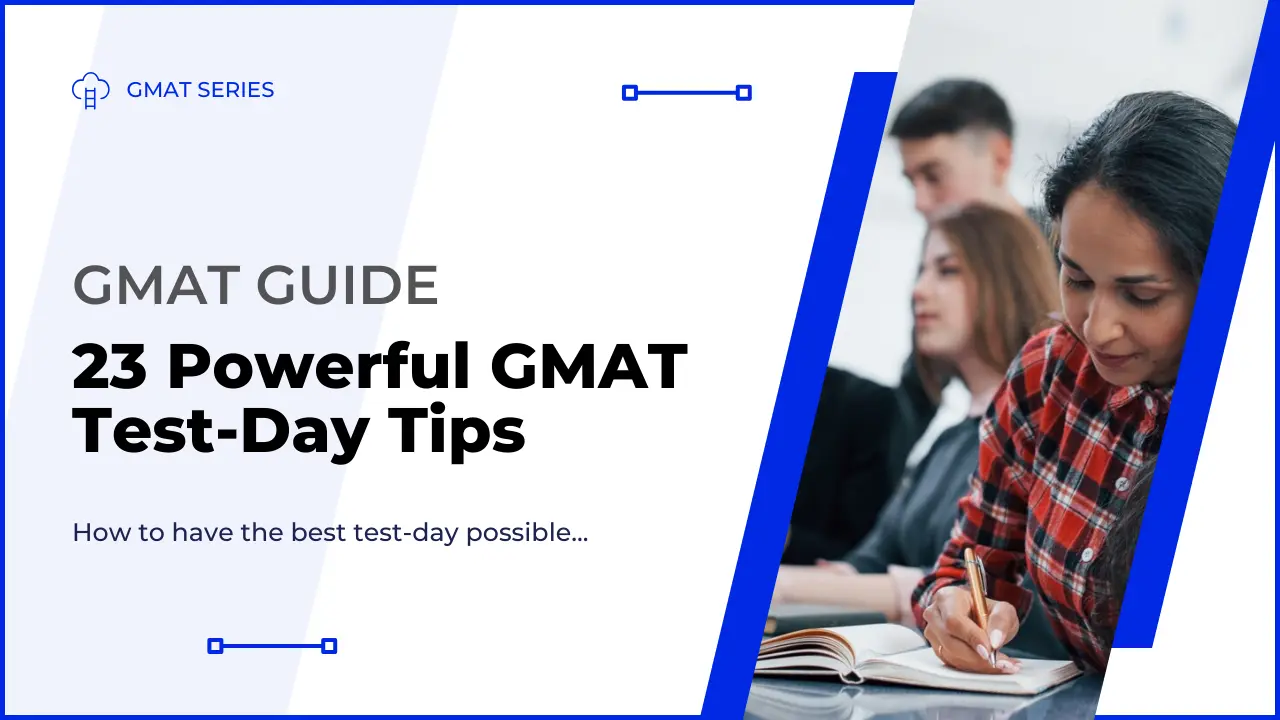
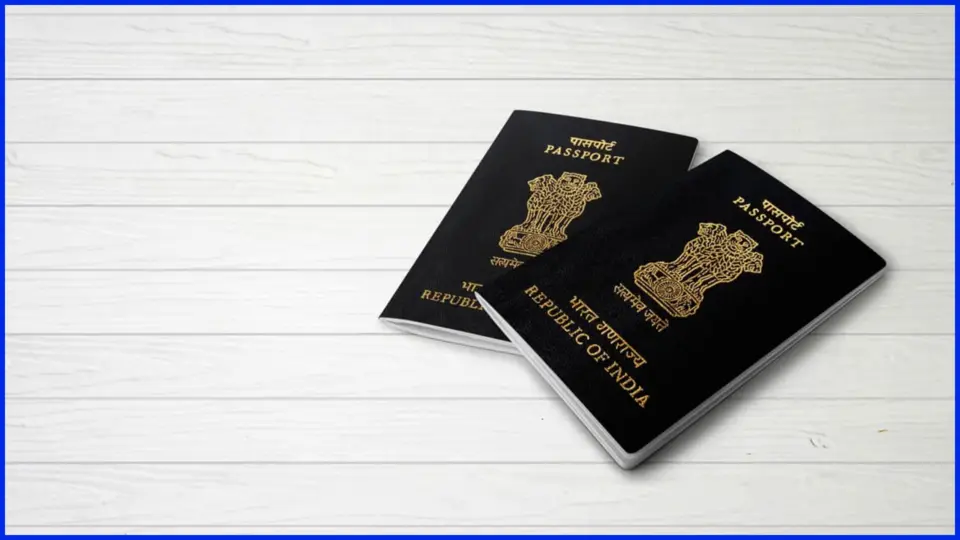
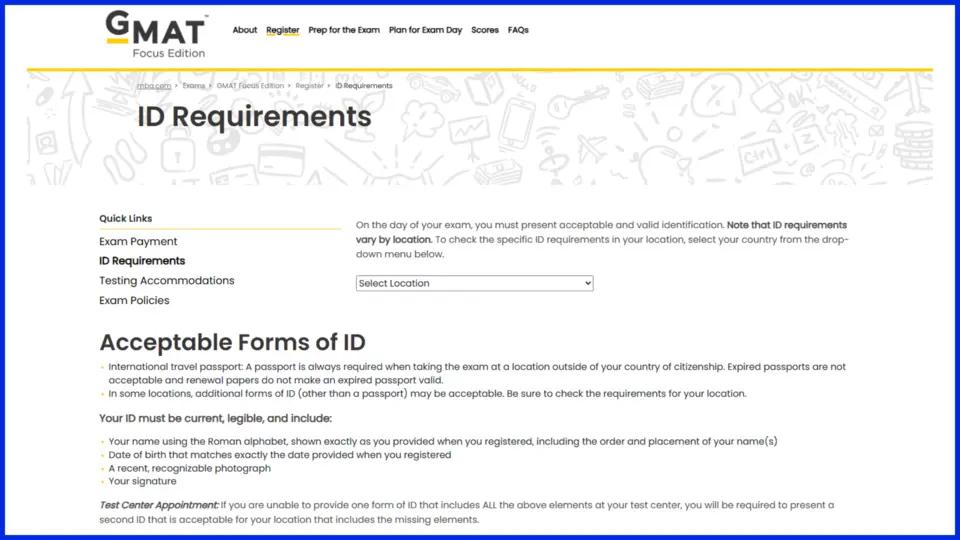
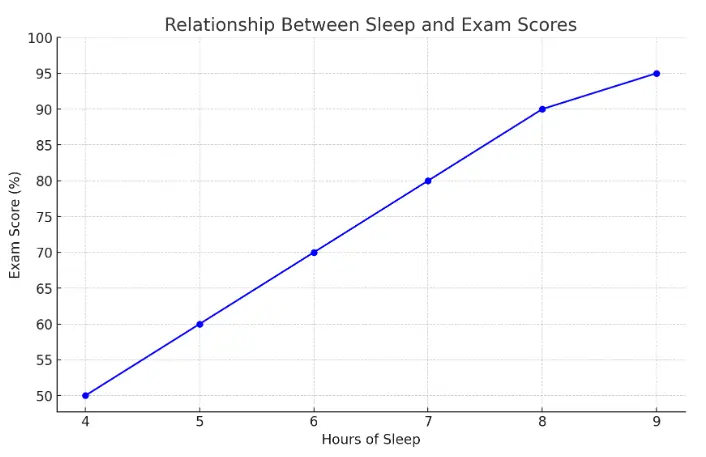
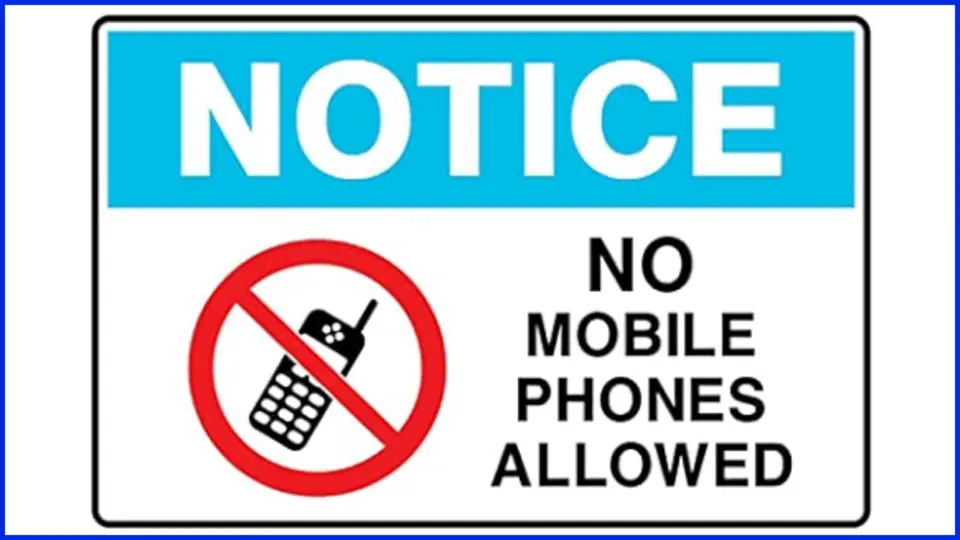

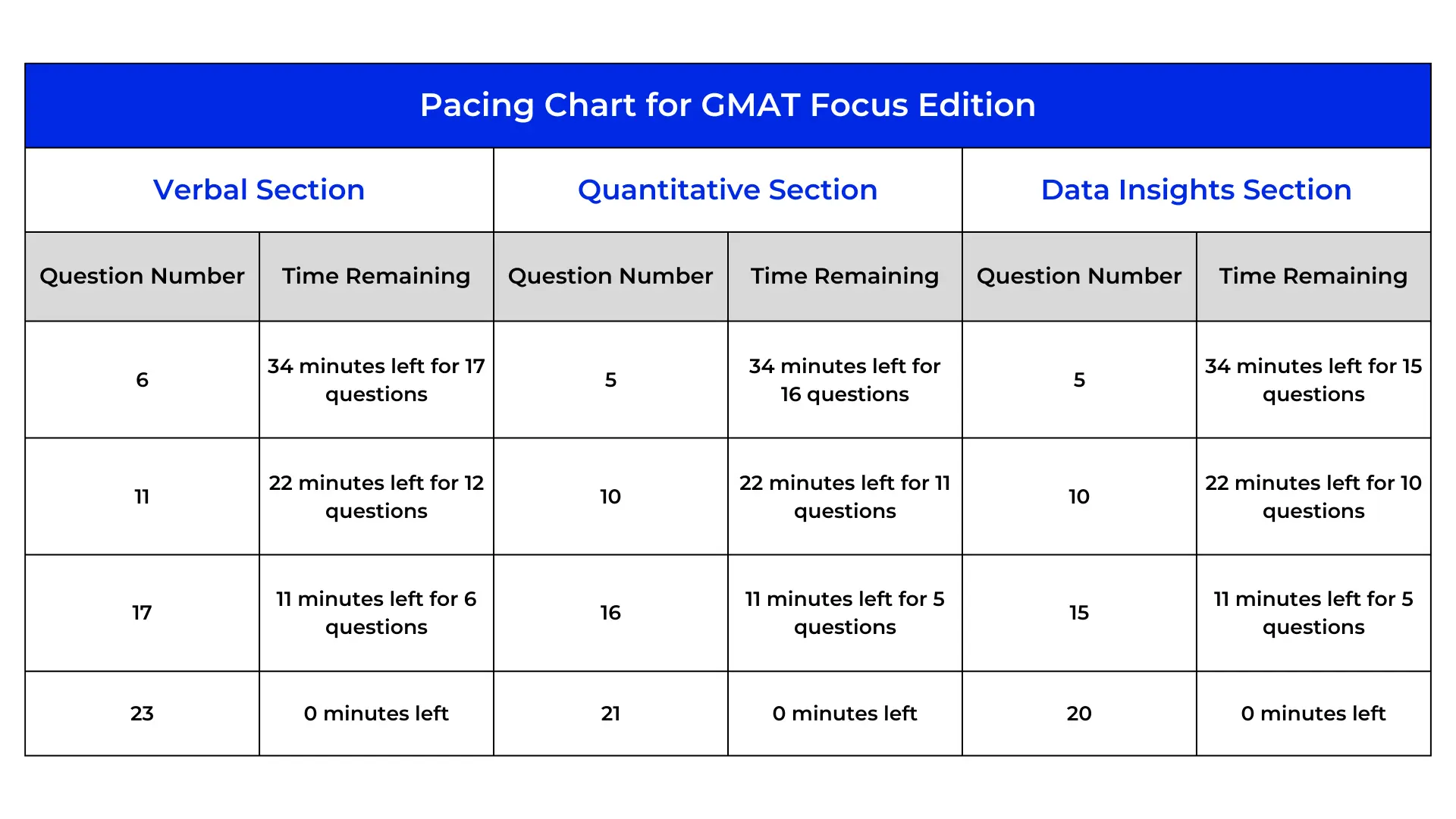
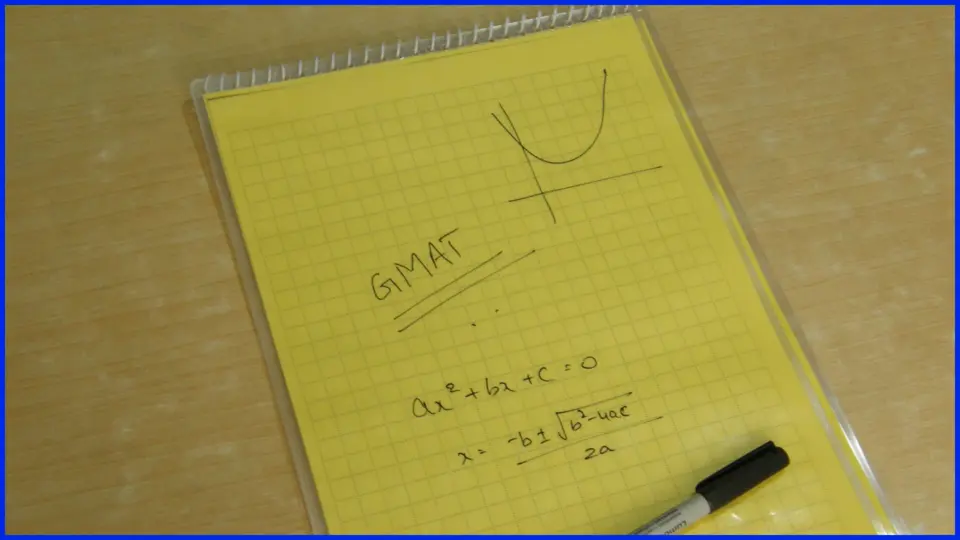



0 Comments